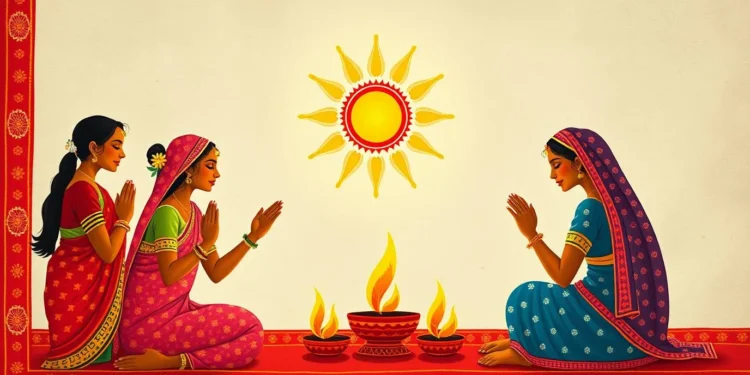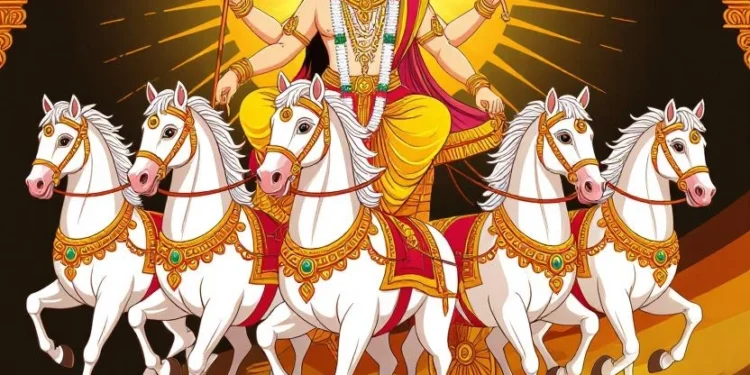Naag Panchami is one of the most fascinating and ancient festivals celebrated in India, Nepal, and other parts of South Asia. It is a day dedicated to honoring serpents, known as “Naags” in Sanskrit and several Indian languages. The festival holds a deep spiritual and cultural significance, reflecting the reverence for snakes in Hinduism, Buddhism, and folk traditions. This celebration brings together faith, mythology, and nature, symbolizing the eternal connection between humans and the serpents that share the earth with us.

In this blog post, we will explore Naag Panchami in depth—from its origins and myths to rituals and modern-day significance. We will understand why serpents are considered sacred in Dharma, the code of cosmic law and morality in Indian spiritual traditions. Join me as we dive into the world of serpents, symbolism, and sacred celebrations that make Naag Panchami a timeless festival.
Table of Contents
1. The Mythical Serpents of Dharma: Roots in Ancient Traditions
Serpents have held a unique place in many ancient cultures around the world, but in Indian dharma (spiritual and moral law), their significance is profound and multi-layered. Naags or serpent beings are not just animals—they are divine entities connected with cosmic powers.
In Hindu mythology, serpents appear in many stories and symbolize wisdom, protection, and regeneration. The cosmic serpent Ananta-Shesha holds Lord Vishnu, one of the principal deities, resting on its coils—an image representing eternity and balance in the universe. Lord Shiva, another major god, is often depicted with a cobra coiled around his neck, symbolizing control over dangerous forces and mastery over death.
Beyond Hinduism, serpents are revered in Jain and Buddhist traditions, where they symbolize enlightenment and protection. The serpent king Mucalinda famously shielded Gautama Buddha from rain during meditation, highlighting the protective aspect of serpents.
This deep mythological connection positions serpents as sacred beings and guardians of dharma—righteousness and order. Naag Panchami honors these serpents and their role in sustaining the balance of nature and cosmic law.
2. Naag Panchami: Origins and Historical Significance
Naag Panchami has been celebrated for thousands of years, making it one of the oldest festivals linked to nature worship and serpent reverence.
Historically, snakes were both feared and respected. Their venom posed a threat, yet their presence was essential for the ecosystem’s health. Ancient agrarian societies depended on snakes to control pests and maintain soil balance.
The festival occurs on the fifth day (Panchami) of the bright half of the lunar month of Shravana (usually July-August), a time when monsoon rains refresh the earth. This period is critical for farmers, and worshipping serpents is believed to protect crops from harm and ensure prosperity.
Texts like the Mahabharata and Puranas contain stories explaining the sanctity of Naags. One famous tale is that of Lord Krishna subduing the serpent Kaliya, symbolizing the triumph of good over evil and the harnessing of chaotic forces.
In many parts of India and Nepal, temples dedicated to Naag Devtas (serpent gods) have been built, showing the longstanding cultural and religious importance of serpent worship.
3. Symbolism of Serpents in Dharma: Beyond the Surface
Serpents are rich in symbolism within dharma traditions. They are not merely creatures but represent deeper spiritual concepts.
Transformation and Renewal
One of the most powerful symbols is the serpent’s ability to shed its skin. This act represents transformation, rebirth, and renewal—core principles in spiritual growth and dharma. Just as a serpent sheds old skin, humans are encouraged to shed ignorance and embrace wisdom.
Protection and Guardianship
Serpents are protectors of sacred treasures, waters, and life forces. In temples and sacred spaces, serpent imagery often guards entrances, symbolizing protection from negative forces.
Fertility and Prosperity
Snakes are associated with the earth’s fertility due to their underground habitat and connection with water. Many agrarian communities worship snakes to ensure fertile lands and abundant harvests.
Balance and Duality
The serpent represents dualities such as life and death, good and evil, and chaos and order. It embodies the balance necessary to maintain dharma in the universe.
4. Rituals and Customs of Naag Panchami: Worship and Celebrations
Naag Panchami is celebrated with various rituals that show devotion and respect to the serpents.
Worship of Snake Idols and Images
Devotees draw images of snakes using natural materials like turmeric, vermilion, and cow dung, decorating them with flowers and sacred threads. Some worship clay or metal idols of snakes. In many temples, live snakes are revered, although this practice varies.
Offering Milk and Sweets
Milk is traditionally offered to snake idols or live snakes, symbolizing purity and devotion. Along with milk, devotees offer sweets, rice, flowers, and vermilion.
Fasting and Prayers
Many people observe a day-long fast and chant mantras and hymns dedicated to the serpent gods, seeking protection from snake bites and blessings for prosperity.
Visiting Snake Temples
Pilgrimage to famous Naag temples is common. Temples like the Ghati Subramanya in Karnataka or the Naag Mandir in Rajasthan are major centers of worship during this festival.
Community Celebrations
In some areas, the festival involves cultural performances like snake dances, storytelling, and folk songs about Naag legends.
5. Naag Panchami in Different Regions: Diverse Traditions and Practices
Naag Panchami is celebrated across India, Nepal, and other South Asian regions, but customs differ by locality.
Northern India
In states like Uttar Pradesh and Bihar, women perform rituals praying for the safety and well-being of their families. Drawing snakes on walls or floors and offering milk are common practices.
Western India
In Maharashtra and Gujarat, tying sacred threads around wrists after worshipping Naags is believed to protect from evil. Temples here conduct grand fairs.
Eastern India
In Bengal and Odisha, the focus is on worshipping Manasa Devi, the serpent goddess. Elaborate rituals and stories about her devotion are performed.
Nepal
Naag Panchami is widely celebrated with prayers to Naag Devtas, folk dances, and community feasts. The festival often integrates local customs and beliefs.
6. Ecological Importance of Serpents and Modern Conservation Efforts
While Naag Panchami celebrates the sacredness of serpents, it also draws attention to their ecological role.
Serpents and Ecosystem Balance
Snakes control populations of rodents and pests that harm crops and spread disease. Their presence is vital for healthy ecosystems.
Threats to Snakes
Due to fear and misunderstanding, snakes face threats from habitat destruction and killing by humans.
Conservation Campaigns
Today, many environmental organizations use Naag Panchami as an opportunity to educate people about snake conservation and promote coexistence.
7. Scientific Understanding of Snakes: Bridging Faith and Knowledge
Faith in Naag Panchami coexists with scientific understanding.
Snake Biology
Snakes are cold-blooded reptiles with fascinating adaptations like venom for hunting and sensory organs for detecting prey.
Medical Uses of Snake Venom
Venom has been researched for its potential in treating diseases like cancer and heart conditions.
Dispelling Myths
Science helps correct misconceptions about snakes, reducing unnecessary fear and promoting respect.
8. Naag Panchami in Contemporary Society: Adapting Traditions
In the modern world, Naag Panchami continues to thrive but adapts to changing social and ethical concerns.
Urban Celebrations
In cities, people worship snake images or statues rather than live snakes.
Animal Rights
Concerns about snake welfare have led to more symbolic worship and avoidance of handling live snakes.
Educational Initiatives
Schools and NGOs use Naag Panchami to teach children about biodiversity and environmental responsibility.
9. Personal Reflections and Stories from Naag Panchami Celebrants
The festival inspires personal stories of faith, protection, and connection with nature.
Many devotees share experiences of feeling safe after worshipping the serpent gods, while others speak of how the festival strengthens family and community bonds.
These stories highlight the festival’s role in fostering spirituality and harmony.
10. Why Celebrating Naag Panchami Matters Today: Lessons from the Serpent
Naag Panchami is more than a ritual—it is a celebration of dharma itself.
It teaches respect for all life.
It reminds us of the interconnectedness of nature.
It calls us to honor ancient wisdom while embracing modern knowledge.
It fosters spiritual growth through symbolism and devotion.
By celebrating Naag Panchami, we keep alive a tradition that teaches humility, respect, and care for the natural world, values critical in today’s world.
Frequently Asked Questions (FAQs)
Q1: What is the meaning of Naag Panchami?
A: Naag Panchami is a Hindu festival dedicated to worshipping serpents (Naags). It is celebrated to honor and seek blessings from serpent gods.
Q2: When is Naag Panchami celebrated?
A: It is celebrated on the fifth day (Panchami) of the bright half of the lunar month Shravana, usually falling in July or August.
Q3: Why are snakes worshipped in Naag Panchami?
A: Snakes are worshipped because they are considered divine protectors, symbols of fertility, and guardians of nature and cosmic balance.
Q4: What are the common rituals during Naag Panchami?
A: Rituals include drawing snake images, offering milk and sweets, fasting, chanting mantras, and visiting snake temples.
Q5: Are live snakes worshipped during Naag Panchami?
A: In some places, live snakes are worshipped, but many practice symbolic worship using images or idols.
Q6: How does Naag Panchami relate to nature conservation?
A: The festival encourages respect for snakes, highlighting their ecological role and promoting efforts to protect them.
Q7: What does the serpent symbolize in Hinduism?
A: Serpents symbolize renewal, protection, wisdom, and the balance of life and death.
Q8: Is Naag Panchami celebrated outside India?
A: Yes, it is also celebrated in Nepal and other South Asian communities.
Q9: How can modern people celebrate Naag Panchami ethically?
A: By worshipping symbolic images, avoiding harm to snakes, and spreading awareness about their importance.
Q10: What lessons can we learn from Naag Panchami?
A: The festival teaches respect for nature, understanding of ancient wisdom, and the importance of harmony with all living beings.






